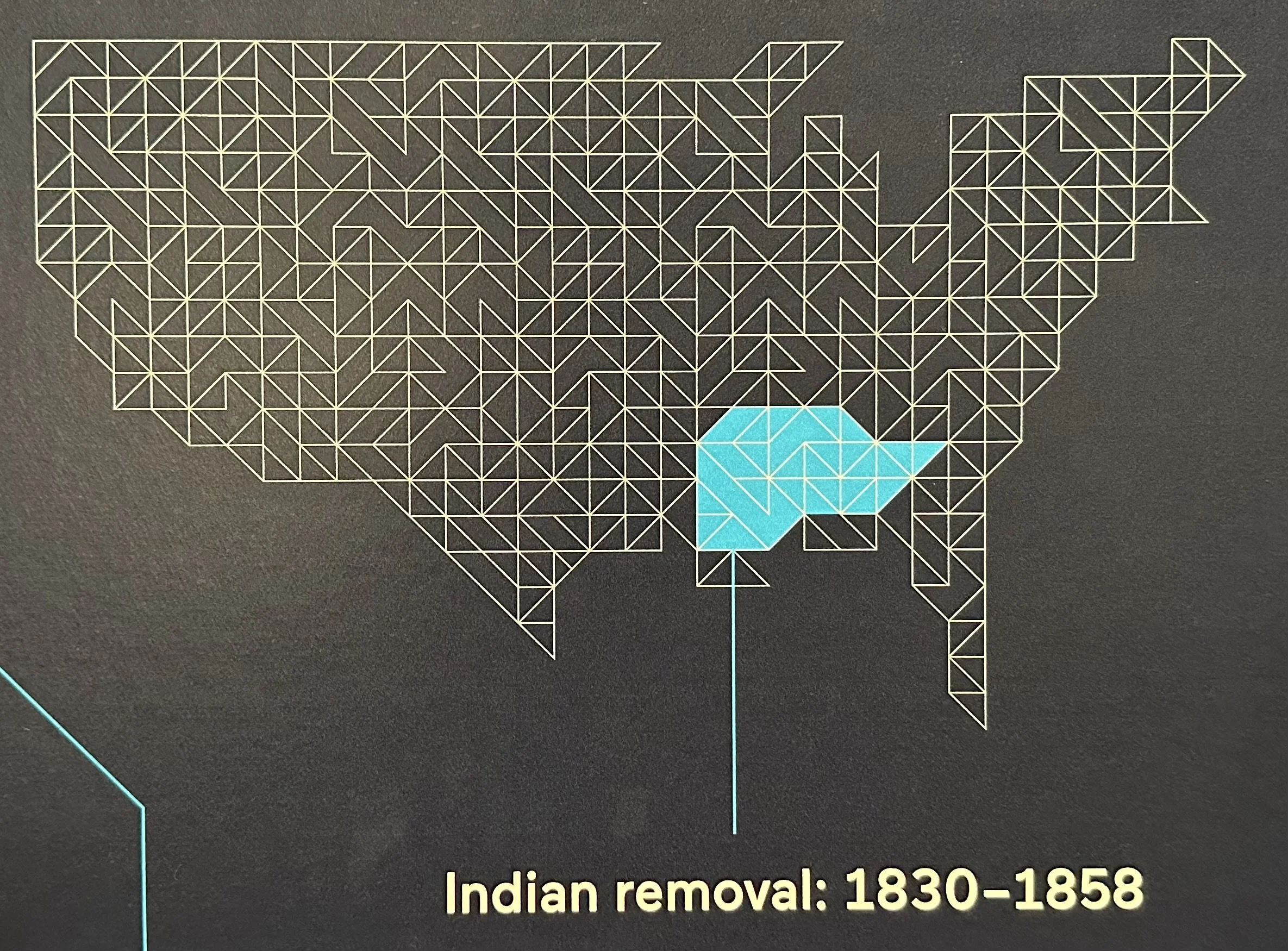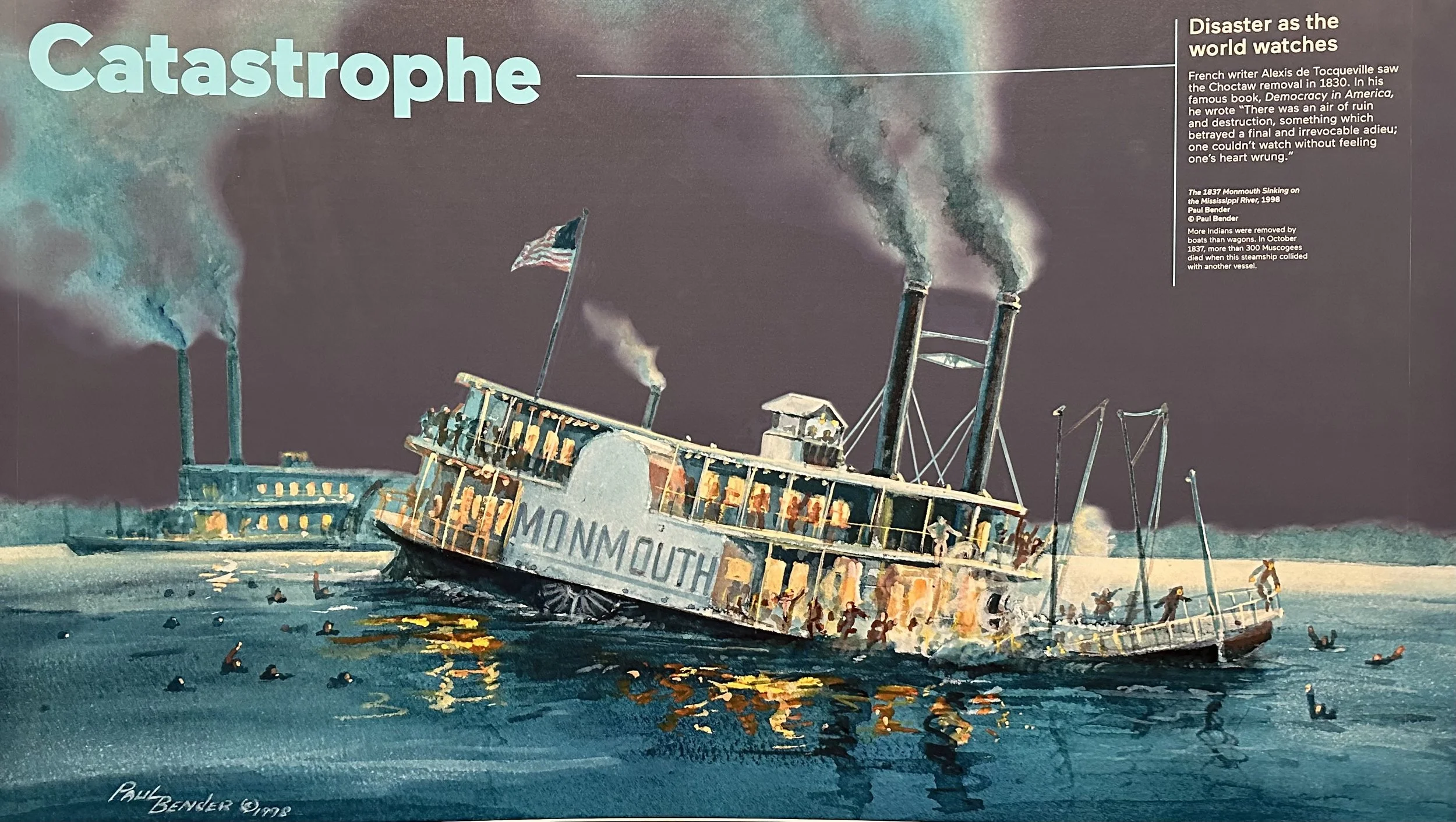National Museum of the American Indian
Ref: Smithsonian Institute. National Museum of the American Indian. Washington DC.
___________________________________________________________________________
Chronology
Jun, 1876: Little Big Horn; the Lakota and Northern Cheyenne defeat a US Army force. Despite the victory, the US wins the Great Sioux War 8 months later and confines to reservations nearly all their Plains Indians adversaries (DC Indian Museum).
1870-1920: The US reservation era; the USG enacts policies that force Plains people to give up their traditions and move them onto reservations (DC Indian Museum).
1868: Shoshone Chief Washakie signs a treaty that establishes a 3M acre reservation in Wyoming’s Wind River Country (DC Indian Museum).
1868: USG commissioners sign a treaty with the Navajo, creating the Navajo reservation (DC Indian Museum).
Oct, 1867: The Treaty of Medicine Lodge Creek; seeking to stem violence on the central plains, the USG sends a delegation of commissioners to meet with the resident tribes at Medicine Lodge Creek in S. Kansas. In the treaty negotiated there, the Kiowa, Comanche, and Plains Apache (Apache Tribe of OK) give up claims to territory N. of the Arkansas River and agree to live together as a confederated nation on a 3M-acre reservation well to the South in Modern OK. The commissioners promised that the government would build houses, a school, and a church for them. Officials returned in 1892 to split the reservation into 160-acre parcels, one per household, so that the remainder of the 3M acres could be sold to outsiders, as authorized by USC in the General Allotment Act of 1887. The confederated tribes eventually sued the government, charging fraud for not adhering to the promises of the Medicine Lodge Creek Treaty. SCOTUS, however, ruled in 1903 (Lone Wolf v. Hitchcock) that the USG had the right to cancel treaties with Indians and to dissolve the Kiowa, Comanche, and Apache Reservation (DC Indian Museum).
Mar, 1851- Jan, 1852: Three US Federal commissioners negotiate 18 treaties that extinguishes Indian claims to almost all of CA west of the Sierra Nevada (DC Indian Museum).
1838-1839: The Trail of Tears is marked by the removal of ~16K Cherokee from the SE (DC Indian Museum).
1837: The Monmouth steamship collides with another vessel on the Mississippi River, resulting in the deaths of ~300 Muscogee (DC Indian Museum).
30 May, 1830: The USG led by POTUS Jackson signs the Indian Removal Act, the first great assertion of federal power over American Indians. The Act never mentions a tribe or region, but it was aimed at the Cherokee, Muscogee (Creek), Choctaw, Chickasaw, and Seminole nations because of their sizeable territories among the fertile US South (DC Indian Museum).
1763-1764: Pontiacs War is launched by a loose confederation of Native Americans who are dissatisfied with British rule in the Great Lakes region following the French and Indian War (1754-1763). Warriors from numerous nations joined in an effort to drive out the British. Hostilities came to an end after British Army expeditions led to peace negotiations in 1765-1766 (DC Indian Museum, Wiki).
1607: 104 Englishmen land on the banks of a river in Powhatan territory. They build a fort and name it after their King, James I. In the first year, disease, starvation, and Indian attacks leave more Englishmen dead than alive (DC Indian Museum).
___________________________________________________________________________










